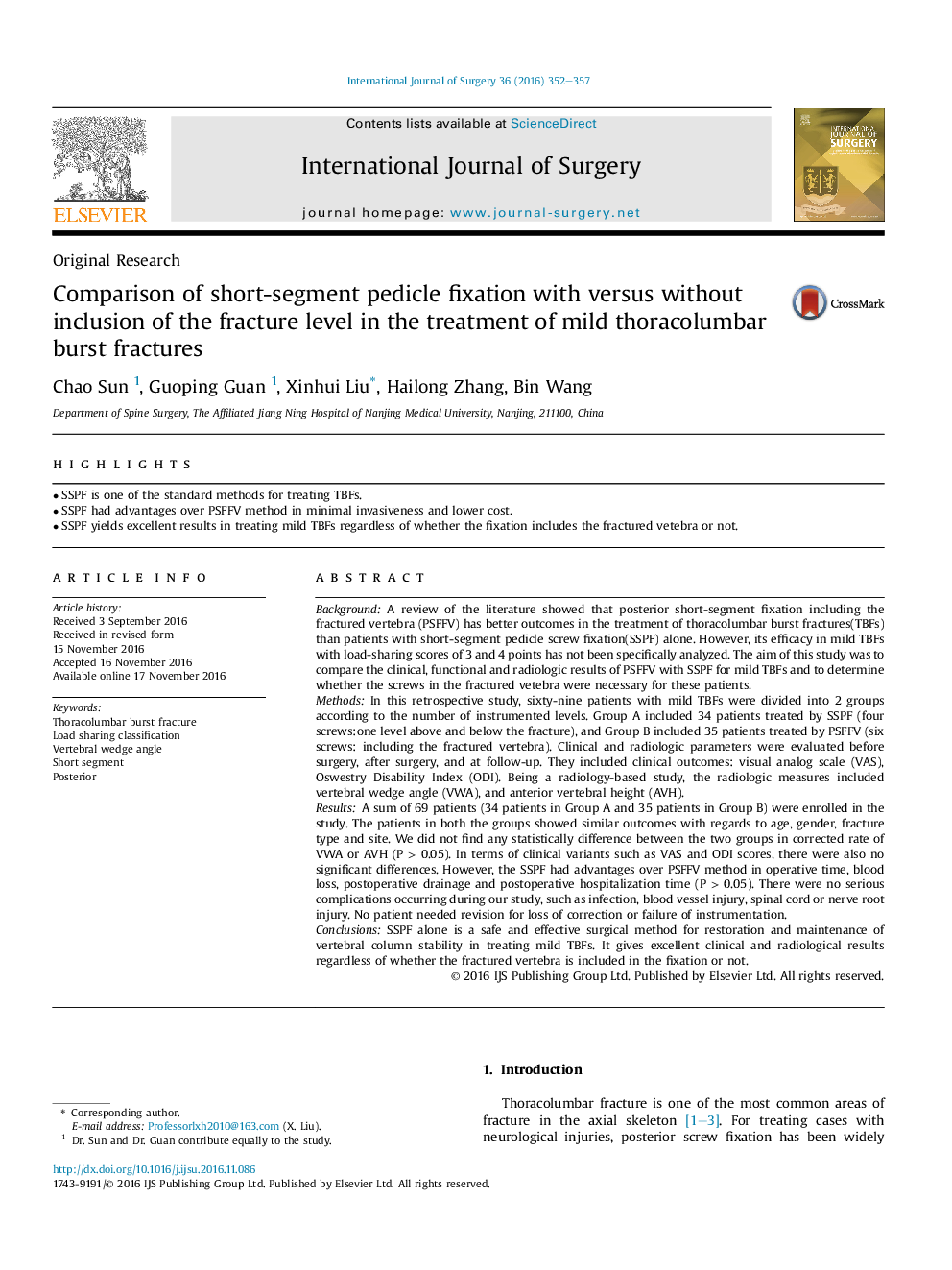| Article ID | Journal | Published Year | Pages | File Type |
|---|---|---|---|---|
| 5731921 | International Journal of Surgery | 2016 | 6 Pages |
â¢SSPF is one of the standard methods for treating TBFs.â¢SSPF had advantages over PSFFV method in minimal invasiveness and lower cost.â¢SSPF yields excellent results in treating mild TBFs regardless of whether the fixation includes the fractured vetebra or not.
BackgroundA review of the literature showed that posterior short-segment fixation including the fractured vertebra (PSFFV) has better outcomes in the treatment of thoracolumbar burst fractures(TBFs) than patients with short-segment pedicle screw fixation(SSPF) alone. However, its efficacy in mild TBFs with load-sharing scores of 3 and 4 points has not been specifically analyzed. The aim of this study was to compare the clinical, functional and radiologic results of PSFFV with SSPF for mild TBFs and to determine whether the screws in the fractured vetebra were necessary for these patients.MethodsIn this retrospective study, sixty-nine patients with mild TBFs were divided into 2 groups according to the number of instrumented levels. Group A included 34 patients treated by SSPF (four screws:one level above and below the fracture), and Group B included 35 patients treated by PSFFV (six screws: including the fractured vertebra). Clinical and radiologic parameters were evaluated before surgery, after surgery, and at follow-up. They included clinical outcomes: visual analog scale (VAS), Oswestry Disability Index (ODI). Being a radiology-based study, the radiologic measures included vertebral wedge angle (VWA), and anterior vertebral height (AVH).ResultsA sum of 69 patients (34 patients in Group A and 35 patients in Group B) were enrolled in the study. The patients in both the groups showed similar outcomes with regards to age, gender, fracture type and site. We did not find any statistically difference between the two groups in corrected rate of VWA or AVH (PÂ >Â 0.05). In terms of clinical variants such as VAS and ODI scores, there were also no significant differences. However, the SSPF had advantages over PSFFV method in operative time, blood loss, postoperative drainage and postoperative hospitalization time (PÂ >Â 0.05). There were no serious complications occurring during our study, such as infection, blood vessel injury, spinal cord or nerve root injury. No patient needed revision for loss of correction or failure of instrumentation.ConclusionsSSPF alone is a safe and effective surgical method for restoration and maintenance of vertebral column stability in treating mild TBFs. It gives excellent clinical and radiological results regardless of whether the fractured vertebra is included in the fixation or not.
